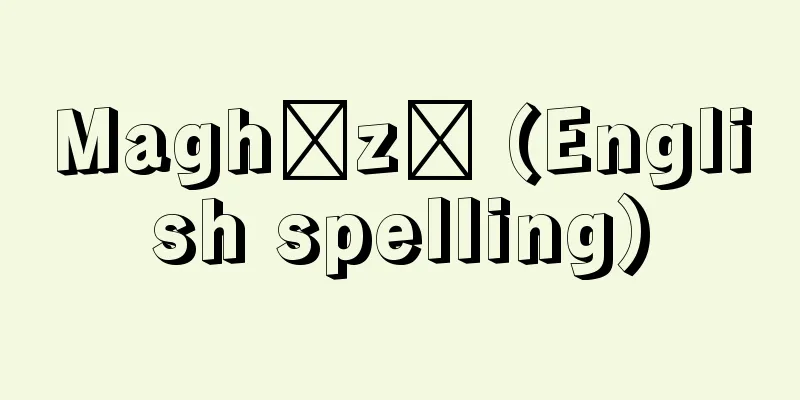Cannon - Taihou

|
A weapon that fires a large bullet. There is no military term for a cannon, so it is extremely unclear what caliber is required to be a cannon, but here we refer to a cannon as any gun with a caliber of 75 mm or more. However, this is merely a socially accepted classification, and in the military, a cannon is defined as anything with a caliber of around 30 mm or more that can be filled with gunpowder. The 1991 Gulf War seemed to have ended in an overwhelming victory for the multinational forces thanks to missile and aircraft attacks using cutting-edge technology, but the Iraqi regime of Saddam Hussein did not collapse, and the military outcome was half-baked. This shows that air attacks alone are not enough to decide the outcome of a war, and that the capture and occupation of strategic bases through land warfare is ultimately inevitable for victory or defeat. Land warfare is a series of bloody battles, very different from air attacks like video games, and the main force in land warfare is land firepower such as tanks and field guns. Here we will look at weapons commonly called cannons among field guns. Generally, cannons have a strong image of being sluggish, old-fashioned, and outdated, unlike high-tech weapons such as missiles, and in fact, they are weapons that have been progressing slowly technologically. However, they are essential weapons for bringing about a final conclusion to a war. [Shudo Inoguchi] historyWeapons resembling cannons first appeared in China in the late 12th century, when the Song army, which fought against the Yuan army, used a weapon called a lance. The lance can be considered the prototype of cannons, but it was not until the beginning of the 14th century that they were developed into full-fledged cannons. Cannons, which appeared in Europe using black powder introduced from China, were made by welding wrought iron rods together to form a tube with one end closed and an iron hoop fitted over the top. Black powder propellant and stone bullets were placed inside the tube, and the device was such that the cannon was ignited and fired. After firing just ten shots, the barrel would burst and become unusable. Also, since they were not equipped with wheels, they were fixed to the front lines and used as siege weapons. In the 15th century, cannons equipped with wheels and cast from bronze appeared. At the same time, rifles and pistols evolved from cannons, and weapons that used the power of burning gas from gunpowder drove out human weapons such as bows and crossbows (spring-loaded weapons that fired stones or arrows) from the battlefield, greatly changing the nature of warfare. However, even as round stones were replaced by cast iron bullets, improvements in fortification techniques continued, and cannons were eventually replaced by rifles. The power of cannons was revived in the early 17th century. Gustavus Adolphus (Gustavus II, 1594-1632) of Sweden used shrapnel shells developed at the time and established an artillery regiment to actively utilize cast iron cannons and increase their mobility. His reforms inspired other European countries, and in France an artillery school was established in the 1690s, from which Napoleon later graduated. During Napoleon's time, shooting techniques had made some progress, and howitzer shells with fire-track fuses appeared, which seemed to herald the arrival of the golden age of cannons. However, the appearance of rifles with spiral barrels surpassed the power of cannons, which had poor firing accuracy and took a long time to load. It was after 1850 that cannons took the lead in military and political science in both name and reality. Inspired by rifles, guns with rifling barrels were made, which improved firing accuracy. Furthermore, while muzzle-loading guns, in which propellant and bullets were loaded from the muzzle, were mainstream up until that point, breech-loading guns, in which the breech was loaded from the breech, were developed. This drastically reduced the time required for loading, making rapid-firing guns possible. Furthermore, in the 1860s, steel barrels were made, which made it possible to use more powerful propellants. Also, recoil mechanisms, which reduce the recoil force of the gun barrel when fired, and recoil mechanisms, which use recoil force to return the gun barrel to its original position, were invented in the 1880s, and the foundations of modern cannons were laid around this time. With the invention of smokeless powder in Vieilles, France, at the end of the 19th century, cannon performance improved significantly, but it was not until the early 20th century that concentrated fire became possible at a distant, unseen enemy. Firing at a directly visible target is called direct aim fire, while firing at an unseen target in the shadow of a distant mountain using map coordinates is called indirect aim fire. The Japanese military adopted the latter method during the Russo-Japanese War. The development of indirect targeting methods expanded the scope of artillery's activities. Furthermore, during World War I, the appearance of tanks and airplanes opened up new fields for artillery, leading to the development of anti-tank guns and anti-aircraft guns. Modern warfare, in which artillery has played a major role, has led to a rapid increase in the consumption of bullets over the years. For example, the US military consumed 1.8 times as much ammunition in the Vietnam War as it did in World War II. The more artillery develops, the more defensive measures are taken to counter it, and this is pursued endlessly, like the relationship between a spear and a shield. In modern times, the development of missiles and aerial weapons has been remarkable, but artillery is also undergoing technological innovation by incorporating a large amount of electronics and computer technology. [Shudo Inoguchi] structureModern cannons are fundamentally the same as those of the 14th century. The principle is the same: gunpowder combustion gases are generated in a nearly sealed space, and the resulting sudden pressure is used to fire a bullet. A breech-loading rifle has a breech locking mechanism called a breech stopper or a breech stopper at the breech. The locking mechanism is opened, the bullet and propellant (a bag of propellant or a cylindrical cartridge) are loaded, and the locking mechanism is closed. To fire a bullet, the primer is ignited by transmitting physical pressure or electricity to the firing pin, causing the propellant to burn. At the same time as the bullet is fired, the barrel tries to move backwards according to the law of action and reaction. This force is weakened by using hydropneumatic pressure to apply the brakes. The force transmitted to the hydropneumatic system is then used to return the barrel to its original position. This mechanism is called a recoil mechanism. With the current increased firing range, even a slight deviation in the position of the gun can cause a significant deviation in the point of impact. The recoil mechanism plays a major role in preventing this. Furthermore, a device that gives the gun direction (aiming) and elevation (firing angle) is also essential for accurate firing. For this reason, a unit called a mil, which is 1/6400 of a circumference (0.05625 degrees), is used in Europe, the United States, and Japan, and precise operating devices have been created to correspond to this. With a turret-mounted gun, the firing direction can be controlled by an electric or hydraulic device, but fine adjustments for towed field guns are made by turning a handle manually. The firing angle was once divided into two parts, the vertical angle and the elevation angle, but now it is only the elevation angle that is considered the firing angle. The firing angle can be determined by human or mechanical power. The firing direction, firing angle, and fuse time are transmitted to the firing crew, and the firing parameters are required to determine these. The effects of distance, direction, wind direction, wind force, temperature, type of gunpowder, muzzle velocity of bullet, rotation of the earth, etc. must be compared with the shooting data when firing under standard conditions and corrected. These factors are summarized in a firing table, which is used as a guideline for actual combat. Today, with the development of computers, it is possible to memorize firing tables in the sighting device, enabling rapid firing. In the case of direct fire, the detection of an enemy immediately gives the gun the prerequisite to fire. For this purpose, a fire control system (FCS) has been developed that can process information from radar, infrared, and other electronic technologies, as well as visual information, in real time. In contrast, in the case of indirect fire, the elements of information are surveys, aerial photography, and maps. Maps are an inseparable part of military science, but they are an even more important resource for indirect fire. Gathering this information in advance is essential for accurate firing. [Shudo Inoguchi] kindsThe number of types of cannons increased during both World War I and World War II. These are collectively called artillery, but can be broadly categorized into land-based weapons, artillery weapons at sea, and airborne firepower. With the advent of tanks, land-based weapons have become more armored and mobility has become more important. Contrary to the old doctrine of big ships and big guns, artillery weapons are now pursued as small-caliber, rapid-firing weapons. The era in which cannons play an important role in naval battles is over, and cannons are now positioned as anti-aircraft firepower, against enemy aircraft and missiles that evade anti-aircraft missiles. Airborne firepower is mainly comprised of machine guns, and the mainstream is anti-tank and anti-aircraft firepower. They are computer-controlled and can fire a large number of rounds per unit time. Structurally, they are divided into howitzers, cannons, mortars, recoilless rifles, machine guns, and smoothbore guns without rifles. By function, they can be divided into towed guns, self-propelled guns, tank guns, anti-tank guns, anti-aircraft guns, and naval guns. [Shudo Inoguchi] [References] | | | | |Anti | | | | |When we say "34 caliber 88mm gun," 88mm is the caliber. 34 caliber refers to the barrel length, which is 34 times the caliber . Cannon caliber and barrel length When the gun barrel recoils after firing a shell, the liquid in the recoil mechanism compresses the gas in the recoil mechanism. The compressed gas recoils the gun barrel . Parking and re-entering A howitzer of the Japan Ground Self-Defense Force. Overall length 11.3m, overall width 3.2m, overall height 4.3m, total weight 40.0t, speed 49.6km/h. 155mm howitzer, 12.7mm heavy machine gun M2 ©Shogakukan "> Type 99 self-propelled 155mm howitzer Self-propelled gun of the Japan Ground Self-Defense Force. Overall length 7.99m, overall width 3.18m, overall height 4.4m, total weight approximately 38t, speed approximately 53km/h. 2 x 35mm anti-aircraft machine guns ©Shogakukan "> Type 87 self-propelled anti-aircraft gun Source: Shogakukan Encyclopedia Nipponica About Encyclopedia Nipponica Information | Legend |
|
大きな弾丸を発射する兵器。軍事用語としての大砲という概念はないので、どれくらいの口径をもって大砲というのかは、きわめてあいまいであるが、ここでは口径75ミリ以上の火砲を大砲とよぶ。ただし、これはあくまでも社会通念的な区分であり、軍事的には弾丸の中に火薬を充填(じゅうてん)できる30ミリ前後以上のものを砲としている。 1991年の湾岸戦争は、先端技術を駆使したミサイルと航空機の攻撃で多国籍軍の圧倒的な勝利に終わったかにみえたが、イラクのサダム・フセイン体制の崩壊に至らず、軍事的には中途半端な結果となった。このことは、航空攻撃だけでは戦争の雌雄を決するには不十分で、最終的に陸戦(陸上戦闘)による戦略的拠点の攻略・占領が勝敗にとって不可避であることを示している。陸戦はテレビゲームのような航空攻撃とは様相が大きく異なり血みどろな戦闘の連続であるが、その陸戦の主力となるのが、戦車、野砲などの陸上火力である。ここでは野砲のなかでも一般的に大砲とよばれる兵器についてみていく。概して大砲は、ミサイルなどのハイテク兵器と違い、鈍重、古くさい、時代遅れといったイメージが強く、事実、技術的進歩の遅い兵器である。だが、戦争の最終決着をつけるために不可欠の兵器である。 [猪口修道] 歴史大砲らしい兵器が登場するのは12世紀後半の中国で、元軍と対戦した宋(そう)軍が突火槍(とっかそう)とよぶ兵器を用いている。突火槍を大砲の原型と考えてもよいが、本格的な大砲として発達するのは14世紀初頭である。中国から伝えられた黒色火薬を使ってヨーロッパに登場した大砲は、錬鉄の棒を溶接し、一端を閉じた筒状にし、その上から鉄のたがをはめたもので、筒の中に発射薬の黒色火薬と石の弾丸を入れ、点火発射する仕掛けであった。10発も撃てば砲身は破裂し使用不能となった。また、車輪が装備されておらず、前線に固定し攻城兵器として使用された。 15世紀になると、車輪を装備し、青銅で鋳造した大砲が出現する。同時に大砲から小銃、ピストルが分化し、発展していくことにより、火薬の燃焼ガスの力を利用した兵器は、それまでの弓、弩(いしゆみ)(ばね仕掛けで石や矢を発射する武器)など人力兵器を戦場から駆逐し、戦争形態を大きく変化させた。しかし、丸い石から鋳鉄弾丸に移行しても、築城技術の改良が進み、やがて大砲は小銃に主役の座を奪われる。大砲の威力が復活するのは17世紀初期である。スウェーデンのグスタフ・アドルフ(グスタフ2世、1594―1632)は当時開発された榴散弾(りゅうさんだん)を用い、積極的に鋳鉄製大砲を活用するために砲兵連隊を創設し、機動性を高めた。彼の改革は他のヨーロッパ諸国にも刺激を与え、フランスでは1690年代に砲兵学校が設立され、のちにナポレオンがここを卒業する。ナポレオンの時代に射撃技術はいちおうの発達を遂げ、火道式信管の榴弾も登場し、大砲全盛時代の到来かと思われた。しかし銃身に螺旋(らせん)を刻んだ小銃(ライフル銃)の登場は、射撃精度が悪く装填(そうてん)に時間のかかる大砲の威力を凌駕(りょうが)した。名実ともに大砲が軍事学的、政治学的に主役の座を占めるのは1850年以降である。ライフル銃に刺激され、砲身に腔綫(こうせん)(ライフル)を刻んだ砲がつくられ、射撃精度があがる。また、それまでは砲口から発射薬、弾丸を装填する前装式が主流であったが、砲尾装填の後装式が開発される。これにより装填に要する時間は大幅に短縮され、速射砲が実現する。さらに1860年代には鋼鉄製砲身がつくられ、より強力な発射薬使用が可能になる。また、発射時の反動で後戻りする砲身の反動力を弱める駐退機、反動力を利用して砲身を元の位置に戻す復座機が1880年代に発明され、近代的大砲の基礎はこのころ形成される。19世紀末にはフランスのビエイユの無煙火薬の発明で、大砲の性能は一段と進歩するが、遠くの見えない敵に対する集中砲火が可能になるのは20世紀初期である。直接見える目標に対する射撃を直接照準射撃といい、遠方の山かげの見えない目標に対して地図の座標を利用する射撃を間接照準射撃という。日露戦争では日本軍が後者の方式を採用している。 間接照準方式の開発により砲兵の活躍の場が広がる。また第一次世界大戦時、戦車、航空機の登場が大砲に新たな分野を切り開き、対戦車砲、高射砲を発展させた。大砲が主役となった近代戦は時代を追うごとに弾丸消費量の急激な増大を招いた。たとえば、アメリカ軍は第二次世界大戦の1.8倍の弾薬をベトナム戦争で消費している。大砲が発達すればするほど、これに対する防御策がとられ、矛と盾の関係のように際限なく追求されていくからである。現代はミサイル、航空兵器の発達が目覚ましいが、大砲もエレクトロニクスやコンピュータ技術をふんだんに取り込むことで、技術革新が図られようとしている。 [猪口修道] 構造現代の大砲は原理的には14世紀の砲と変わらない。火薬の燃焼ガスを密閉に近い空間で発生させ、その急激な圧力で弾丸を発射する原理は同じである。後装式ライフル砲は、砲尾に鎖栓(させん)あるいは隔螺(かくら)とよばれる砲尾閉鎖機が設けられている。閉鎖機を開き、弾丸と発射薬(装薬が袋状になった薬嚢(やくのう)か筒状になった薬莢(やっきょう))を装填し、閉鎖機を閉じる。発射は、撃針に物理的圧力か電気を伝えることで雷管を発火させ、装薬を燃焼させる。弾丸の発射と同時に砲身は作用・反作用の法則で後部に移動しようとする。この力を油気圧を利用して弱め、ブレーキをかける。さらに油気圧系に伝えられた力を利用して砲身を元の位置に戻す。この装置を駐退復座機とよぶ。射距離が伸びている現在、砲のわずかな位置の狂いも着弾地点に大幅な狂いを生ずる。これを防止するためにも駐退復座機の役目は大きい。さらに砲に方向(射向)、俯仰(ふぎょう)(射角)を与える装置も正確な射撃には欠かせない。このために、円周の6400分の1(0.05625度)であるmil(ミル)とよばれる単位が欧米、日本で用いられ、これに呼応した精密な作動装置がつくられている。砲塔をもった砲であれば、射向は電動あるいは油圧装置で作動できるが、牽引(けんいん)式の野砲の微調整は、ハンドルを人力で回して行う。射角はかつて上下角、高低角の二つに分けられたが、いまでは高低角のみで射角とされている。射角は人力あるいは機械力で与えられる。射撃要員に伝達されるのは射向、射角と信管秒時で、これを決定するにあたり射撃諸元が求められる。距離、方角、風向、風力、気温、火薬の種類、弾丸初速、地球の回転などの影響を、標準状態で射撃したときの射撃諸元と比較し修正していかなければならない。これらの要素をまとめたのが射表で、実戦上の目安として用いられる。コンピュータが発達した今日では、照準装置に射表を記憶させ、敏速な射撃が可能になった。 直接照準射撃の場合は、敵の発見がただちに砲に射撃の必要条件を与えることになる。このために射撃管制装置Fire Control System(FCS)が開発されており、レーダー、赤外線などのエレクトロニクス技術や目視による情報をリアルタイムで処理できる。これに対し、間接照準射撃では、情報の要素は測量や空中撮影による調査、さらに地図である。軍事学に地図は不可分のものだが、間接照準射撃にはより重要な資料といえる。正確な射撃には事前にこうした情報収集が不可欠である。 [猪口修道] 種類第一次、第二次両世界大戦を通じて大砲の種類は増加した。これらをまとめて火砲とよぶが、大別すると、陸の陸戦兵器、海の砲熕(ほうこう)兵器、空の航空火力に分類できる。陸戦兵器は戦車の登場でより装甲化され、機動性が重視される傾向にある。砲熕兵器はかつての大艦巨砲主義とは逆に、小口径で速射性の高いものが追求されている。もはや艦隊決戦で砲が活躍する時代ではなく、むしろ対空火力として、対空ミサイルをかいくぐって襲来する敵機やミサイルに対抗する兵器として位置づけられている。航空火力は機関砲が主力で、対戦車および対航空機用が主流。コンピュータでコントロールされ、単位時間当りの発射弾量の多いものが使用されている。 構造的には榴弾(りゅうだん)砲、カノン砲、迫撃砲、無反動砲、機関砲、さらにライフルのない滑腔砲に分けられる。機能別には牽引(けんいん)式砲、自走砲、戦車砲、対戦車砲、高射砲、艦砲などに区別できる。 [猪口修道] [参照項目] | | | | | | | | | |「34口径88mm砲」という場合、88mmが口径。34口径とは砲身長のことで、口径の34倍の砲身長を示す©Shogakukan"> 大砲の口径と砲身長 砲弾の発射による砲身の駐退で、駐退機内の液体が復座機内のガスを圧縮する。圧縮されたガスが砲身を復座させる©Shogakukan"> 駐退機と復座機 陸上自衛隊の榴弾砲。全長11.3m、全幅3.2m、全高4.3m、全備重量40.0t、速度49.6km/h。155mm榴弾砲、12.7mm重機関銃M2©Shogakukan"> 99式自走155mm榴弾砲 陸上自衛隊の自走砲。全長7.99m、全幅3.18m、全高4.4m、全備重量約38t、速度約53km/h。35mm高射機関砲×2©Shogakukan"> 87式自走高射機関砲 出典 小学館 日本大百科全書(ニッポニカ)日本大百科全書(ニッポニカ)について 情報 | 凡例 |
Recommend
Samukawa [town] - Sangawa
A former town in Okawa District, eastern Kagawa Pr...
Rental oxen - Karikoshi
…The Sanuki Mountains are close to the Yoshino Ri...
socialisme autogestionnaire (English) socialisme autogestionnaire
…Official name: French RepublicRépublique françai...
Shaving one's head
Shaving one's head, either completely or parti...
Supervisor - Gen
〘Noun〙① Special administrative districts establish...
Gakuzen no Tayuu - The Grand Master
…Originally, following the Chinese model of the f...
Kagura music - Kagura bayashi
… [Folk performing arts] In the narrow sense, hay...
"Royal Fireworks Music"
…The most famous of his late oratorios are Teodor...
Afyon
...The capital of the province of the same name, ...
National Theatre
The British national theater. The term "natio...
Naphtha (English spelling)
It is a fraction of gasoline obtained by atmosphe...
Frithiofs Saga - Frithiofs Story (English)
A full-length epic poem by Swedish poet Tegnér, pu...
col
… Anseilen [German]: Tying together with a rope t...
Touka
One of the ancient dances and songs introduced fr...
Social Security Law
A general term for legislation that stipulates leg...









